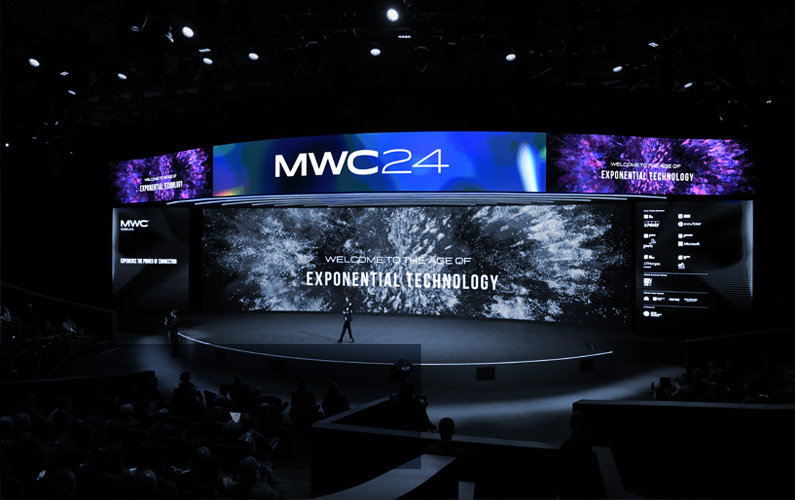Reading time: 3 min
Our analysis of Mobile World Congress 2024 showed smartphone players fell into the comms trap of talking a lot about AI but little about specific AI-enabled use cases and experiences.
The context: At this year’s Mobile World Congress (MWC), the biggest mobile industry trade show in the world, smartphone manufacturers jumped on the AI bandwagon amid sluggish sales as consumers are taking longer to upgrade their devices due to a lack of significant innovations and high inflation.
What we found: Our analysis of 587 English-language articles published in the last month revealed that although MWC has become a broader technology show recently, this year the smartphone was back on centre stage thanks to the emergence of new concepts like AI-powered smartphones.
Key takeaways from our analysis:
- Samsung’s dominance: Samsung led the conversation with its Galaxy AI vision, echoing its successful narrative from CES 2024. Despite facing stiff competition from Apple, Samsung’s Galaxy S24 series captured substantial media attention, positioning it as a frontrunner in AI smartphone innovation.
- Competitor analysis: While Google, Xiaomi, Honor, and Oppo also emphasized their AI capabilities, they, like Samsung, failed to effectively communicate the real-world applications of these technologies.
- Emerging risk: The prevalent focus on AI as a buzzword rather than a clearly defined feature set risks leading to “AI fatigue” among consumers, potentially undermining trust and interest in AI as a unique selling point.
Features like AI-enhanced photo editing or AI-powered voice translation gained very limited media visibility in the debate:
In other words, while many companies were eager to highlight their use of AI, they often fell short of effectively communicating the practical applications and benefits of these AI integrations to the end-users.
There was limited visibility for, say, Samsung‘s AI feature enabling real-time audio and text translation during phone calls or Xiaomi‘s enhancement and expansion of images using AI.
Similarly, there was little media awareness of Honor‘s eye-tracking technology which allows users to control apps with their eyes or Oppo‘s AI feature that enables users to remove unwanted objects from images.
Our take
Our main takeaway from CES was that AI is no longer a differentiating factor.
Moving to MWC 2024, this perspective deepened and brought us to these conclusions:
- Not only AI can cease to be a unique selling point, but there’s also an emerging risk of what tech commentators call “AI fatigue”, with brands blindly jumping on the AI trend without good PR and comms strategies.
- In the smartphone sector in particular, “AI smartphone” is still more of a buzz term than a clear value proposition, as companies don’t show clear use cases to maintain consumer interest and trust in AI as something tangible rather than just a marketing term.
- This means that PR and comms should shift the narrative from highlighting how much AI brands use to effectively communicate the unique ways how and why they use it.
How Commetric can help
Leveraging Commetric’s media measurement can significantly enhance your product PR strategy by:
- Identifying effective narratives: Understanding which AI-related narratives resonate with the audience, allowing for more targeted and impactful messaging.
- Competitive benchmarking: Assessing your brand’s AI communication effectiveness against competitors to refine your PR approach.
- Spotlighting opportunities: Identifying gaps in the market’s AI communication to position your products uniquely and compellingly.
- Enhancing visibility: Pinpointing key influencers and media platforms that can amplify your AI-related features and benefits.

